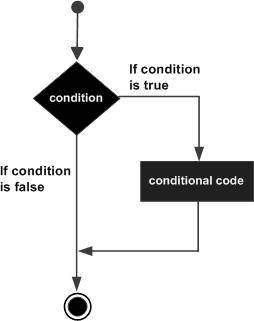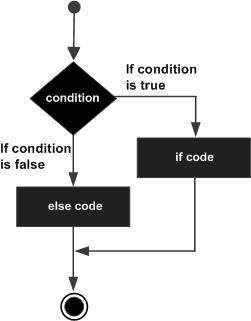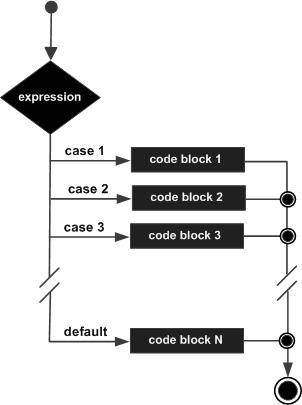What We Do
- Our Focus is You
We focus on your online needs so that you can focus on your customer's needs. There are numerous way in which we can help you. We begin by reviewing your business goals, your marketing objectives, and your competitive position, and then we develop your online presence to meet your needs. - Dynamic Content
Today's web applications require dynamically driven content, and much of that content is provided by a database and a programming language operating in harmony to produce the desired results. MySQL and PHP are two of the most popular web development tools utilized to produce dynamic web sites. We can help you take control and begin building truly dynamic web content which is easier to maintain, is more responsive to your users, and can alter its appearance based upon differing situations. Contact Us today to discuss your custom development needs. - Content Management Systems (CMS)
We can deploy CMS applications to allow organizations to edit content easily, which significantly cuts down on costly professional maintenance fees. Our CMS expertise covers Joomla, Wordpress and Blogger platforms. We are ready to help you choose which works best for your specific needs. Contact Us today to begin taking control of your content.
Powered by Blogger.
C# Control Statements Part 1 (If and Switch statements)
Decision making structures require that the programmer specify one or more conditions to be evaluated or tested by the program, along with a statement or statements to be executed if the condition is determined to be true, and optionally, other statements to be executed if the condition is determined to be false.
Following is the general from of a typical decision making structure found in most of the programming languages:

Decision making statements in C#
C# provides following types of decision making statements. Click the following links to check their detail.
Syntax:
The syntax of an if statement in C# is:
Flow Diagram:

The above code results in the following:

The syntax of an if...else if...else statement in C# is:
The syntax for a nested if statement is as follows:
Example:

The value of a ? expression is determined like this: Exp1 is evaluated. If it is true, then Exp2 is evaluated and becomes the value of the entire ? expression. If Exp1 is false, then Exp3 is evaluated and its value becomes the value of the expression.
Following is the general from of a typical decision making structure found in most of the programming languages:

Decision making statements in C#
C# provides following types of decision making statements. Click the following links to check their detail.
| Statement | Description |
|---|---|
| if statement | An if statement consists of a boolean expression followed by one or more statements. |
| if...else statement | An if statement can be followed by an optional else statement, which executes when the boolean expression is false. |
| nested if statements | You can use one if or else if statement inside another if or else if statement(s). |
| switch statement | A switch statement allows a variable to be tested for equality against a list of values. |
| nested switch statements | You can use one switch statement inside another switchstatement(s). |
If Statement
An if statement consists of a boolean expression followed by one or more statements.Syntax:
The syntax of an if statement in C# is:
if(boolean_expression) { /* statement(s) will execute if the boolean expression is true */ }If the boolean expression evaluates to true, then the block of code inside the if statement will be executed. If boolean expression evaluates to false, then the first set of code after the end of the if statement(after the closing curly brace) will be executed.
Flow Diagram:

Example:
using System; namespace DecisionMaking { class Program { static void Main(string[] args) { /* local variable definition */ int a = 10; /* check the boolean condition using if statement */ if (a < 20) { /* if condition is true then print the following */ Console.WriteLine("a is less than 20"); } Console.WriteLine("value of a is : {0}", a); Console.ReadLine(); } } }
a is less than 20; value of a is : 10
If...else Statement
An if statement can be followed by an optional else statement, which executes when the boolean expression is false.
Syntax:
The syntax of an if...else statement in C# is:
if(boolean_expression)
{
/* statement(s) will execute if the boolean expression is true */
}
else
{
/* statement(s) will execute if the boolean expression is false */
}
If the boolean expression evaluates to true, then the if block of code will be executed, otherwise else block of code will be executed.
Flow Diagram:

Example:
using System; namespace DecisionMaking { class Program { static void Main(string[] args) { /* local variable definition */ int a = 100; /* check the boolean condition */ if (a < 20) { /* if condition is true then print the following */ Console.WriteLine("a is less than 20"); } else { /* if condition is false then print the following */ Console.WriteLine("a is not less than 20"); } Console.WriteLine("value of a is : {0}", a); Console.ReadLine(); } } }
The above code results in the following:
a is not less than 20; value of a is : 100
If...else if...else Statement
An if statement can be followed by an optional else if...else statement, which is very useful to test various conditions using single if...else if statement.
When using if , else if , else statements there are few points to keep in mind.
- An if can have zero or one else's and it must come after any else if's.
- An if can have zero to many else if's and they must come before the else.
- Once an else if succeeds, none of the remaining else if's or else's will be tested.
if(boolean_expression 1) { /* Executes when the boolean expression 1 is true */ } else if( boolean_expression 2) { /* Executes when the boolean expression 2 is true */ } else if( boolean_expression 3) { /* Executes when the boolean expression 3 is true */ } else { /* executes when the none of the above condition is true */ }Example:
using System; namespace DecisionMaking { class Program { static void Main(string[] args) { /* local variable definition */ int a = 100; /* check the boolean condition */ if (a == 10) { /* if condition is true then print the following */ Console.WriteLine("Value of a is 10"); } else if (a == 20) { /* if else if condition is true */ Console.WriteLine("Value of a is 20"); } else if (a == 30) { /* if else if condition is true */ Console.WriteLine("Value of a is 30"); } else { /* if none of the conditions is true */ Console.WriteLine("None of the values is matching"); } Console.WriteLine("Exact value of a is: {0}", a); Console.ReadLine(); } } }The above code results in the following:
None of the values is matching Exact value of a is: 100
Nested If Statements
It is always legal in C# to nest if-else statements, which means you can use one if or else if statement inside another if or else if statement(s).The syntax for a nested if statement is as follows:
if( boolean_expression 1) { /* Executes when the boolean expression 1 is true */ if(boolean_expression 2) { /* Executes when the boolean expression 2 is true */ } }You can nest else if...else in the similar way as you have nested if statement.
Example:
using System; namespace DecisionMaking { class Program { static void Main(string[] args) { //* local variable definition */ int a = 100; int b = 200; /* check the boolean condition */ if (a == 100) { /* if condition is true then check the following */ if (b == 200) { /* if condition is true then print the following */ Console.WriteLine("Value of a is 100 and b is 200"); } } Console.WriteLine("Exact value of a is : {0}", a); Console.WriteLine("Exact value of b is : {0}", b); Console.ReadLine(); } } }When the above code is executed it will result in the following:
Value of a is 100 and b is 200 Exact value of a is : 100 Exact value of b is : 200
Switch Statements
A switch statement allows a variable to be tested for equality against a list of values. Each value is called a case, and the variable being switched on is checked for each switch case.
The syntax for a switch statement in C# is as follows:
switch(expression){ case constant-expression : statement(s); break; /* optional */ case constant-expression : statement(s); break; /* optional */ /* you can have any number of case statements */ default : /* Optional */ statement(s); }
The following rules apply to a switch statement:
- The expression used in a switch statement must have an integral or enumerated type, or be of a class type in which the class has a single conversion function to an integral or enumerated type.
- You can have any number of case statements within a switch. Each case is followed by the value to be compared to and a colon.
- The constant-expression for a case must be the same data type as the variable in the switch, and it must be a constant or a literal.
- When the variable being switched on is equal to a case, the statements following that case will execute until a break statement is reached.
- When a break statement is reached, the switch terminates, and the flow of control jumps to the next line following the switch statement.
- Not every case needs to contain a break. If no break appears, the flow of control will fall through to subsequent cases until a break is reached.
- A switch statement can have an optional default case, which must appear at the end of the switch. The default case can be used for performing a task when none of the cases is true. No break is needed in the default case.
Flow Diagram:

Example:
using System; namespace DecisionMaking { class Program { static void Main(string[] args) { /* local variable definition */ char grade = 'B'; switch (grade) { case 'A': Console.WriteLine("Excellent!"); break; case 'B': case 'C': Console.WriteLine("Well done"); break; case 'D': Console.WriteLine("You passed"); break; case 'F': Console.WriteLine("Better try again"); break; default: Console.WriteLine("Invalid grade"); break; } Console.WriteLine("Your grade is {0}", grade); Console.ReadLine(); } } }
The above code results in the following:
Well done Your grade is B
Nested Switch Statements
It is possible to have a switch as part of the statement sequence of an outer switch. Even if the case constants of the inner and outer switch contain common values, no conflicts will arise.
The syntax for a nested switch statement is as follows:
switch(ch1) { case 'A': printf("This A is part of outer switch" ); switch(ch2) { case 'A': printf("This A is part of inner switch" ); break; case 'B': /* inner B case code */ } break; case 'B': /* outer B case code */ }
Example:
using System; namespace DecisionMaking { class Program { static void Main(string[] args) { int a = 100; int b = 200; switch (a) { case 100: Console.WriteLine("This is part of outer switch "); switch (b) { case 200: Console.WriteLine("This is part of inner switch "); break; } break; } Console.WriteLine("Exact value of a is : {0}", a); Console.WriteLine("Exact value of b is : {0}", b); Console.ReadLine(); } } }
When the above code is compiled and executed, it produces the following result:
This is part of outer switch This is part of inner switch Exact value of a is : 100 Exact value of b is : 200
The ? : Operator:
The operator ? : can be used to replace if...else statements. It has the following general form:Exp1 ? Exp2 : Exp3;Where Exp1, Exp2, and Exp3 are expressions. Notice the use and placement of the colon.
The value of a ? expression is determined like this: Exp1 is evaluated. If it is true, then Exp2 is evaluated and becomes the value of the entire ? expression. If Exp1 is false, then Exp3 is evaluated and its value becomes the value of the expression.